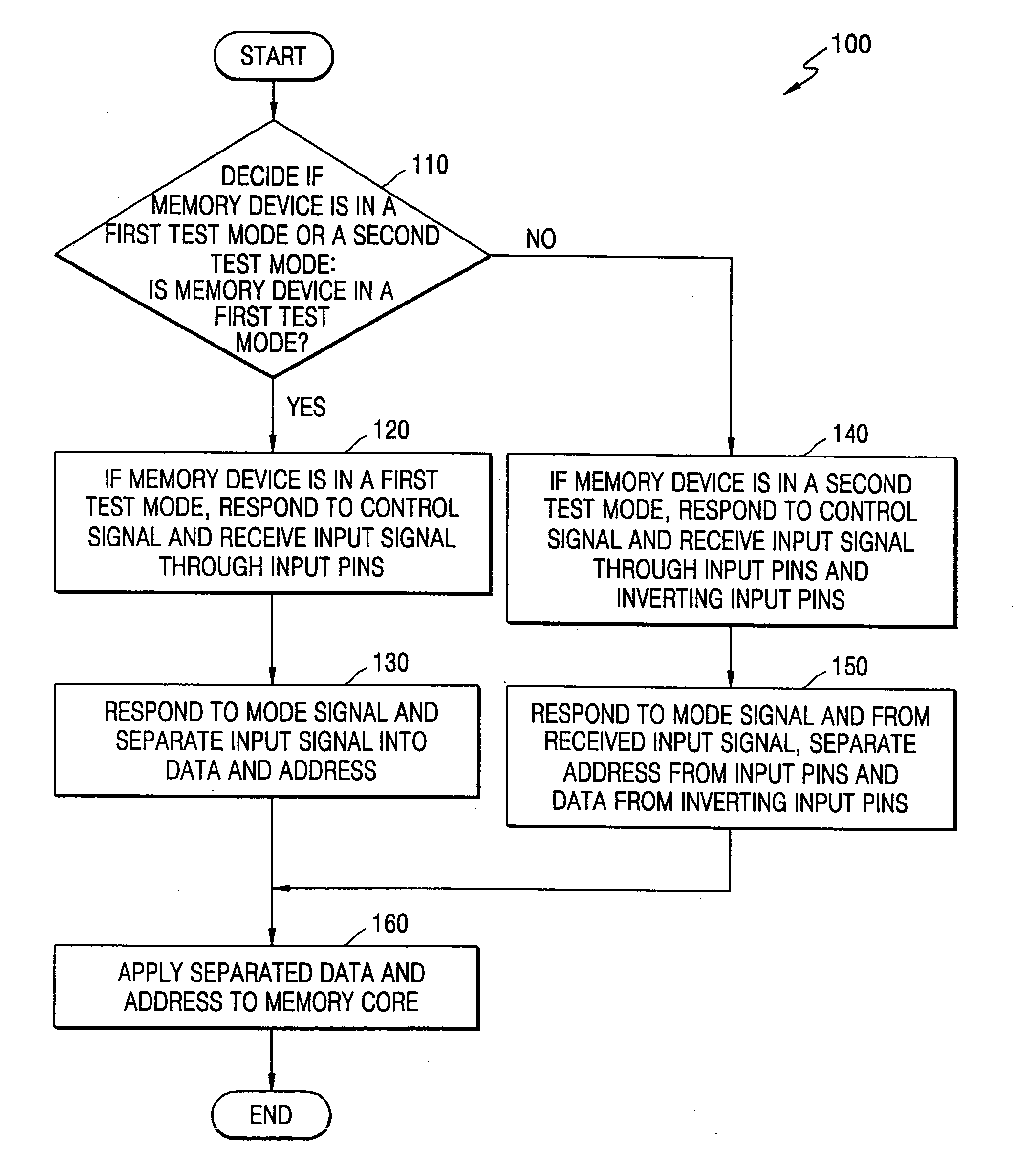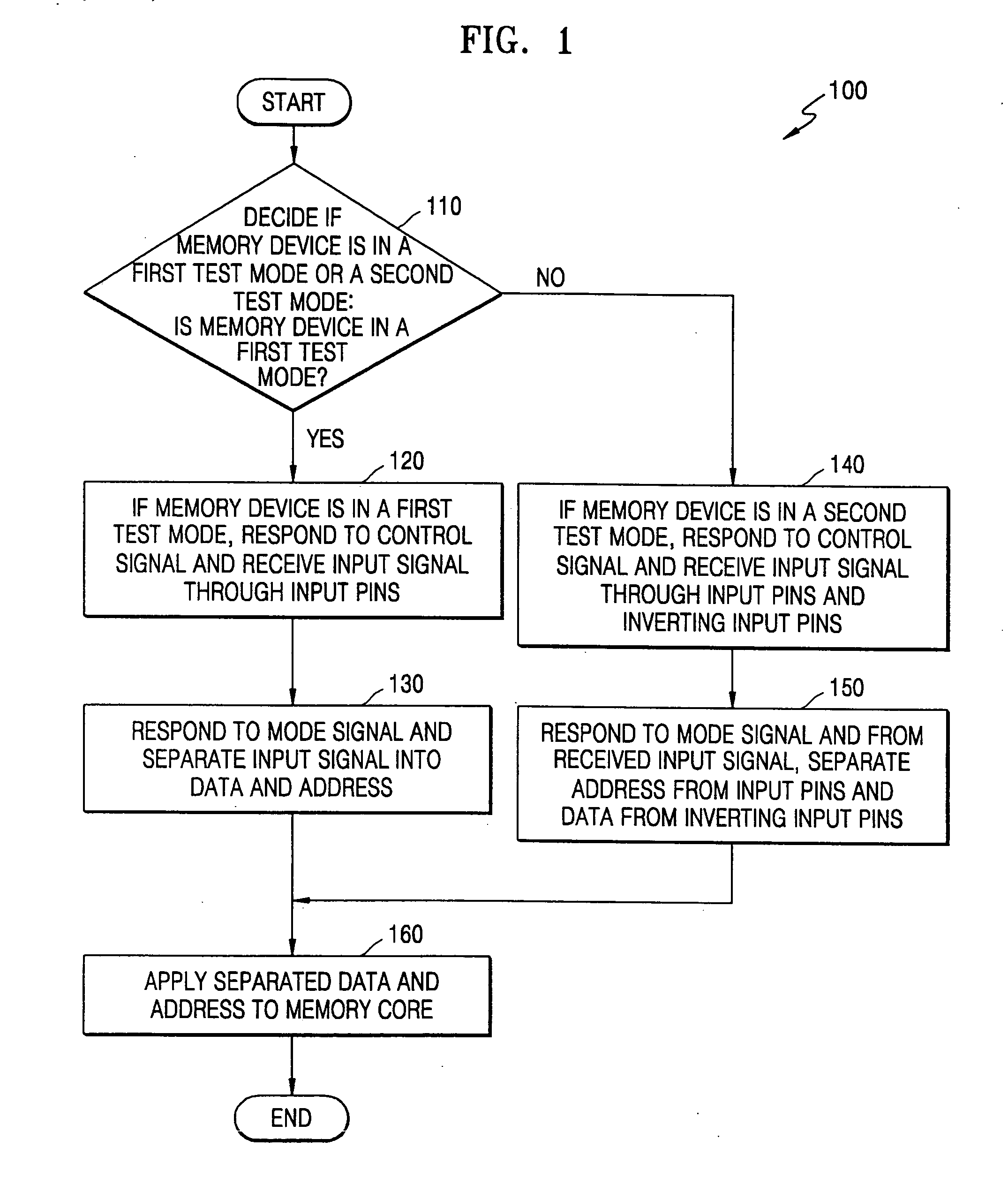Memory device and input signal control method of a memory device
- Summary
- Abstract
- Description
- Claims
- Application Information
AI Technical Summary
Benefits of technology
Problems solved by technology
Method used
Image
Examples
Embodiment Construction
[0022] Example FIG. 1 is a flow chart illustrating a method of controlling an input signal of a memory device for each test mode, according to embodiments of the present invention. Method 100 controls input signals of a memory device for each test mode. In Step 110, it is determined whether the memory device is in a first test mode or a second test mode. In Step 120, in response to a control signal, if the memory device is in the first test mode, the input signal is received through input pins. In Step 130, in response to a mode signal, the input signal is separated into data and an address. In Step 160, the separated input signals are applied to the core of a memory device. In Step 140, if the memory device is in the second test mode, in response to a control signal, the input signal is received at input pins and inverting input pins. In Step 150, in response to a mode signal, addresses from input signals received through input pins are separated and data from the input signals rec...
PUM
 Login to View More
Login to View More Abstract
Description
Claims
Application Information
 Login to View More
Login to View More - R&D Engineer
- R&D Manager
- IP Professional
- Industry Leading Data Capabilities
- Powerful AI technology
- Patent DNA Extraction
Browse by: Latest US Patents, China's latest patents, Technical Efficacy Thesaurus, Application Domain, Technology Topic, Popular Technical Reports.
© 2024 PatSnap. All rights reserved.Legal|Privacy policy|Modern Slavery Act Transparency Statement|Sitemap|About US| Contact US: help@patsnap.com










